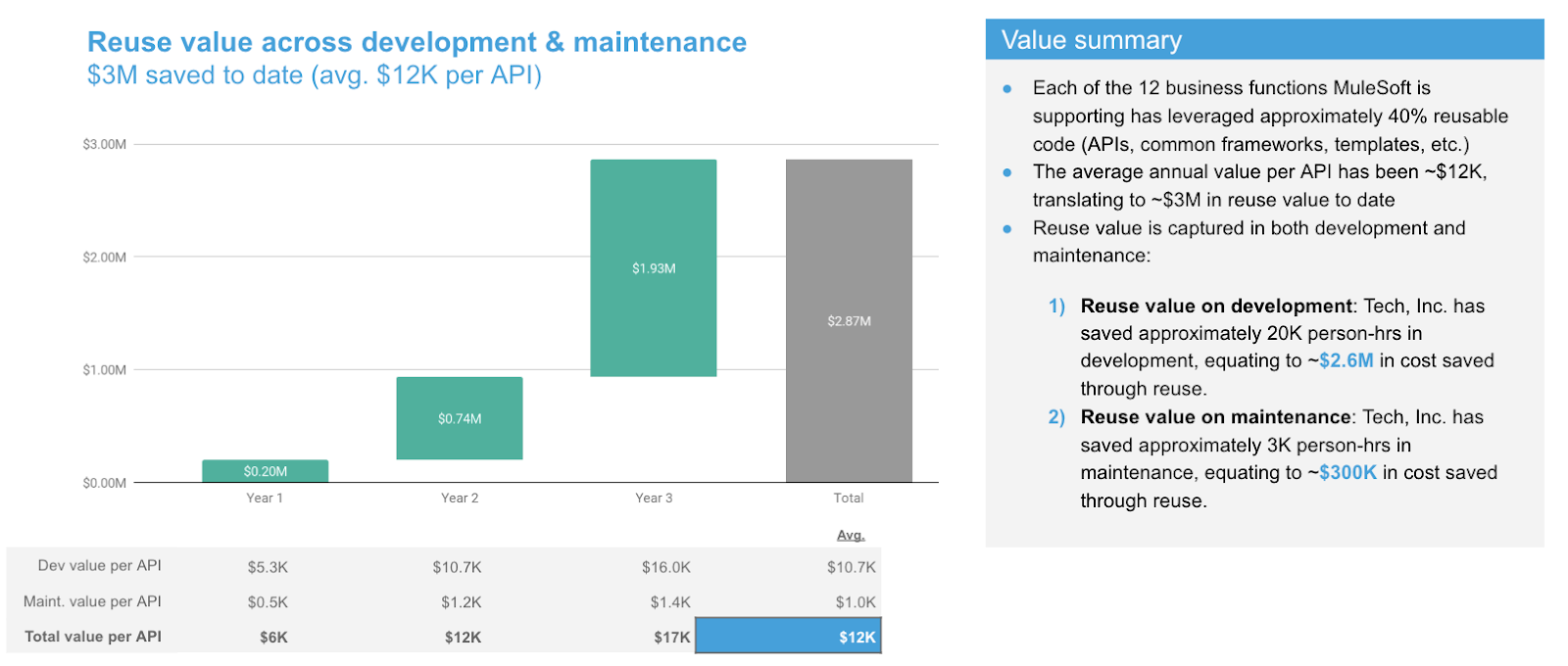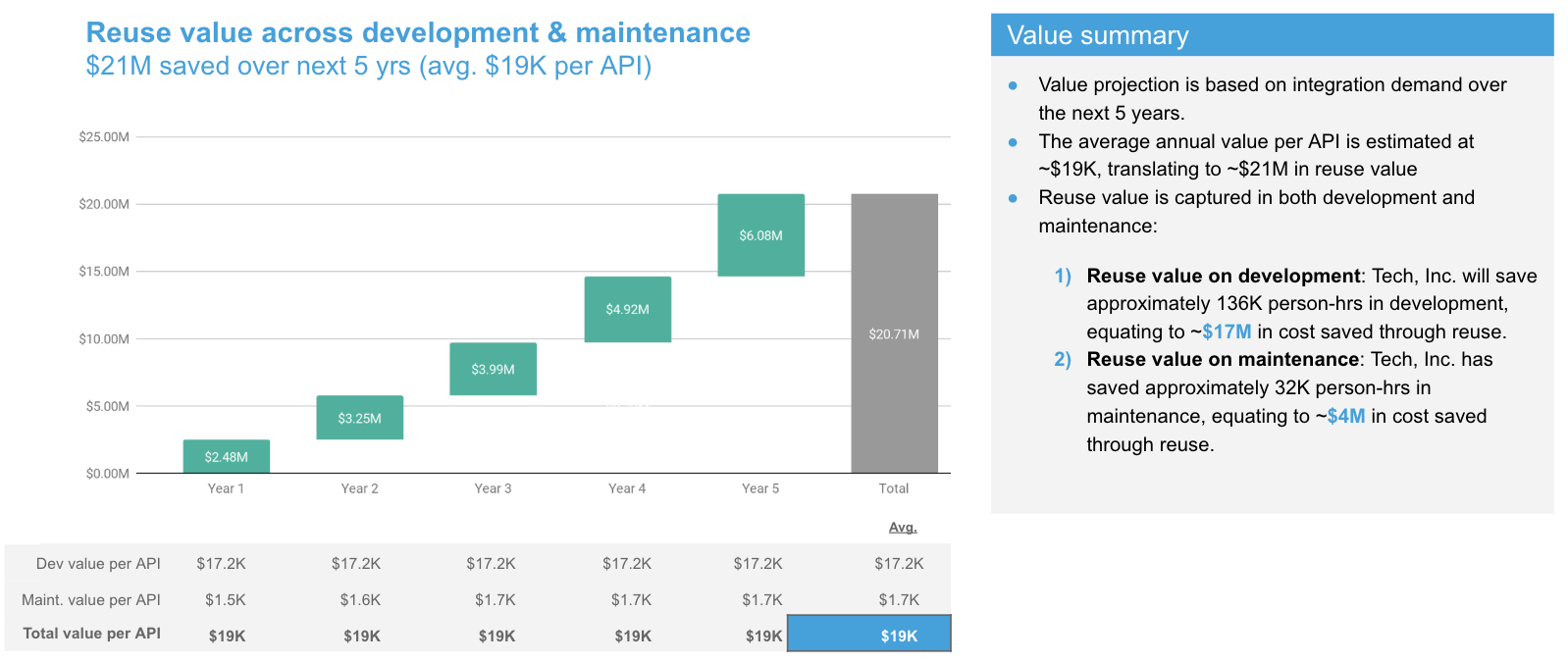In my first blog post of this 3-part series, I introduced the concept of reuse and return on integration assets (ROIA). In the second post, I shared a simple framework you can leverage to calculate ROIA to help inform integration development prioritization. In this post, I’ll share how one MuleSoft customer (I’ll call them “Tech, Inc.”) creates millions of dollars in value per year through reuse.
Case study: Multinational software provider realizes millions of dollars of value with reusable integration assets
First, a bit of context: Tech, Inc. was experiencing double-digit annual growth but they lacked the foundation to continue to scale the business cost effectively (IT systems, infrastructure, architecture, business processes, etc.). They knew that the customer experience needed to be improved and operational efficiencies & agility had to be drastically enhanced. This would put Tech, Inc. in a better position to achieve sustainable profits over time. As the path forward, Tech, Inc. launched a 5-year digital transformation program, with targeted investments in numerous strategic business capabilities (all of which required new technologies and business processes). At the core of this transformation was integration, but at the time, Tech, Inc. did not have an integration strategy, nor a platform. Enter, MuleSoft.
Tech, Inc. made the strategic decision to partner with MuleSoft to support its transformation, and thus far, the partnership has yielded tremendous results. Over the first 3 years, Tech, Inc. successfully delivered 12 of the transformation program’s initiatives. What’s more, while Tech, Inc. achieved its short-term value targets (positive NPV, IRR, etc.), it has done so without sacrificing sustainable profits in the long-term. I’ll explain…
The ability to achieve both short- and long-term objectives (and value targets) requires that you have a scalable (digital) foundation in place. And having the right integration strategy is critical. While a point-to-point integration approach may yield short-term results (i.e., you get your initiative out the door relatively quickly), it’s often at the expense of the long-term (i.e., the integations you build are not reusable nor built for scale, negatively impacting your organization’s ability to create value over time). Tech, Inc. had the right dual focus for its transformation, focusing on developing a digital foundation that would support both the short- and long-term needs of the business. To make it a reality, Tech, Inc. built its digital foundation and capabilities following an API-led connectivity approach. They used the ROIA framework and prioritized integration delivery accordingly which has led to material impact to Tech, Inc.’s top- and bottom-line. Here, as the ROIA framework details, I’ll focus on the development and maintenance benefits they have achieved (and will achieve):
Tech, Inc.’s savings and results through API reuse
By prioritizing API development based on ROIA, Tech, Inc. has saved an average of $12K per instance of API reuse, yielding $3M in integration development and maintenance savings.

As Tech, Inc. continues to leverage the ROIA framework to guide its integration delivery, it will save an average of $19K per instance of reuse, yielding an estimated $21M in additional integration development & maintenance savings over the next five years.

While the above details the development and maintenance efficiencies that reuse has created (and will create) for Tech, Inc., there are numerous other sources of value that these reusable assets will unlock (e.g., improved innovation, faster time-to-market, improved business productivity, etc.) Take a look at our Value of Integration whitepaper to learn more about the indirect benefits reuse and a modern integration approach can create for your organization.
Tech, Inc. is just one example out of many MuleSoft customers that are creating significant value for their organizations through integration asset reuse. Contact MuleSoft Catalyst Mobilize to learn how MuleSoft can help your organization achieve sustainable profits through reuse and a better integration strategy.









